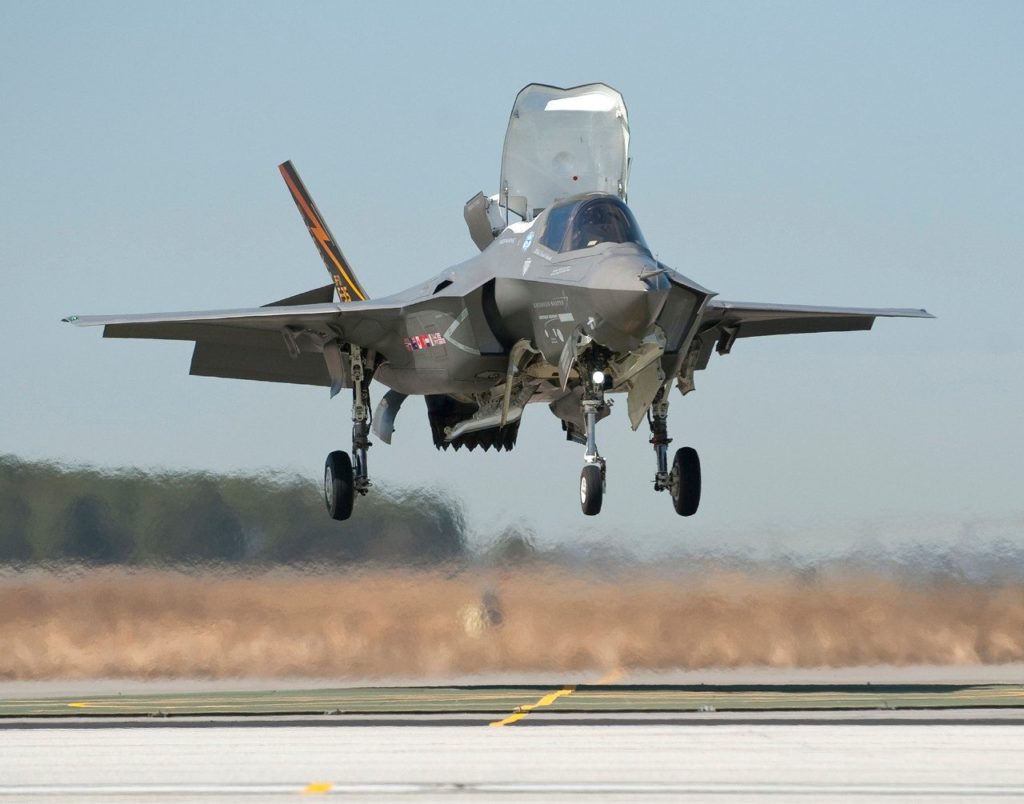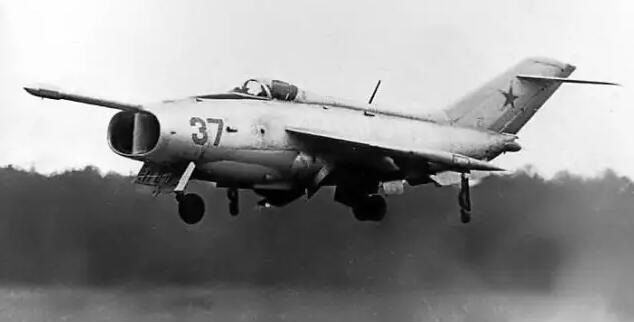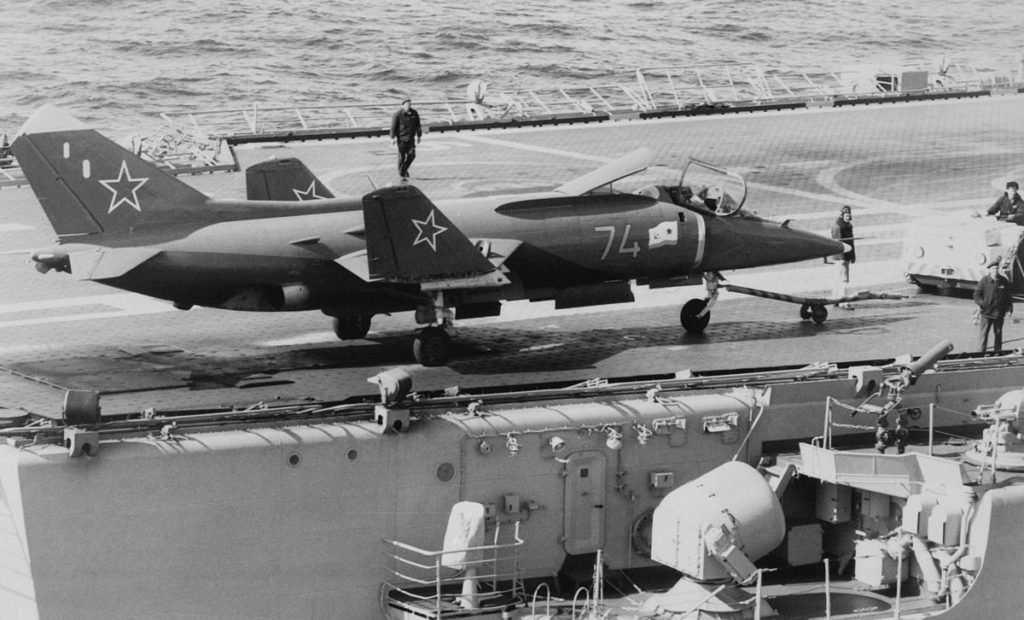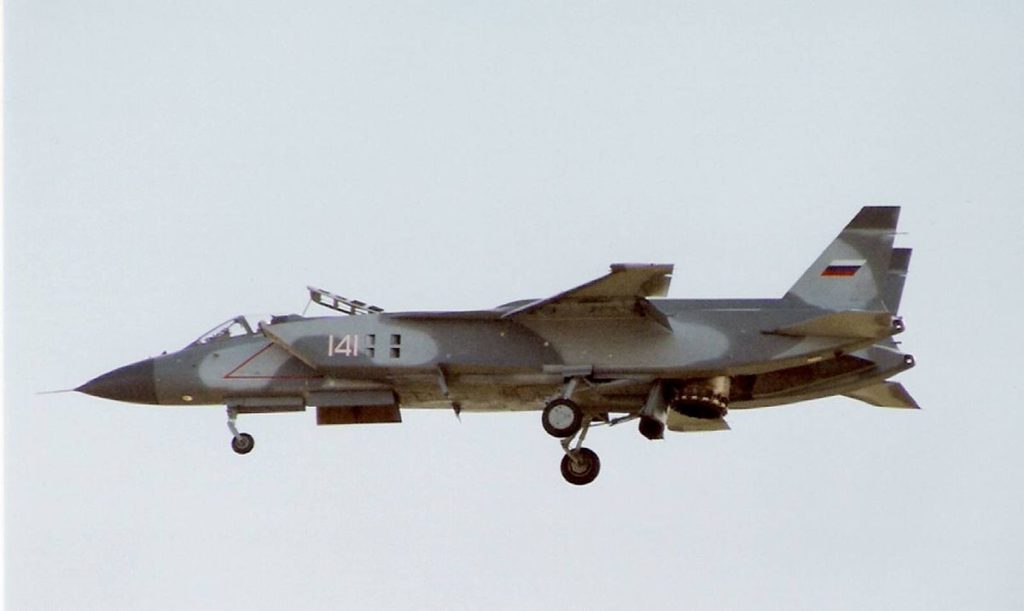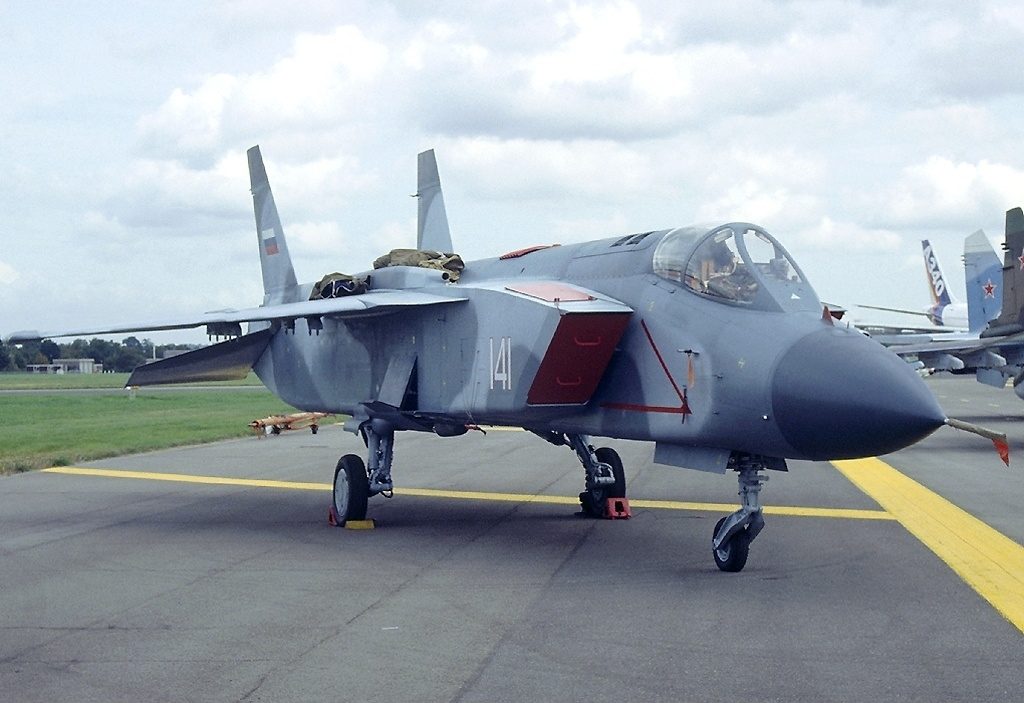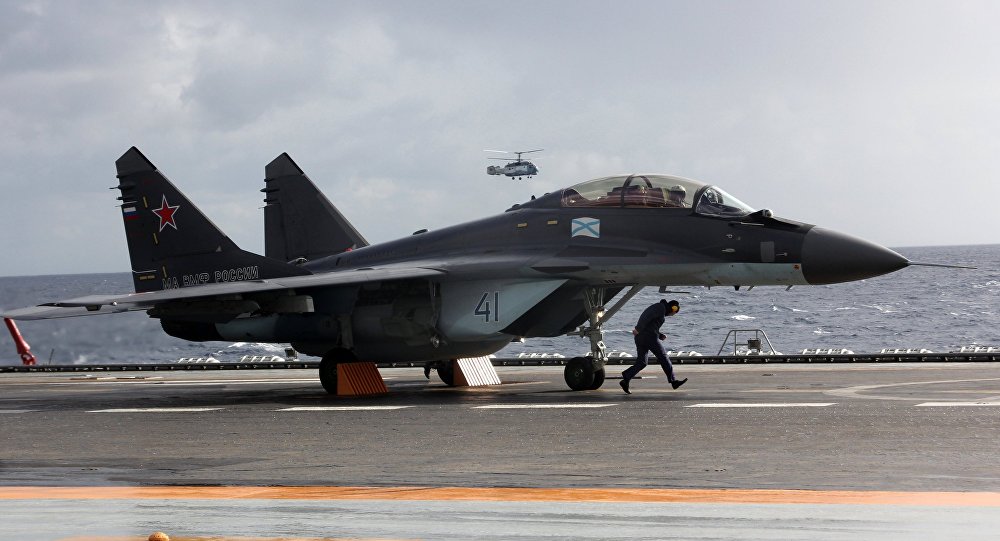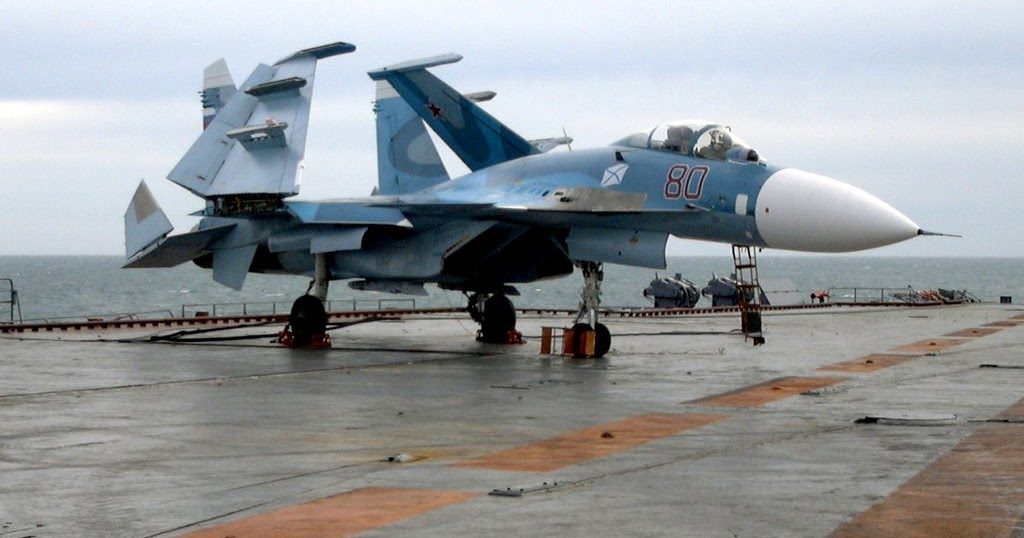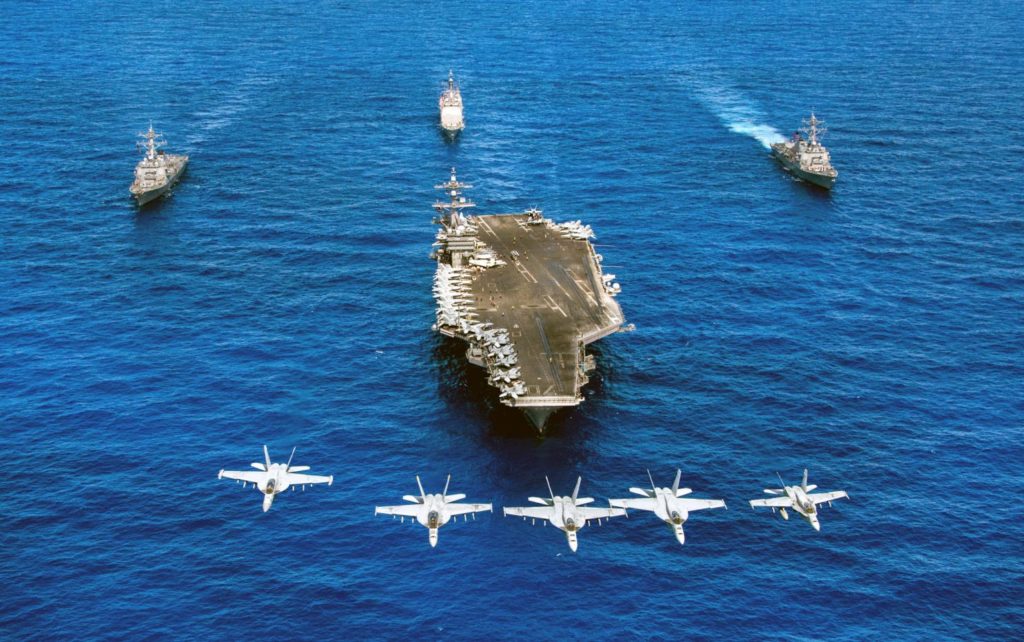DEAR FRIENDS. IF YOU LIKE THIS TYPE OF CONTENT, SUPPORT SOUTHFRONT WORK:
PayPal: southfront@internet.ru
Donation alerts: https://donationalerts.com/r/southfront
Gumroad: https://gumroad.com/southfront
Or via: http://southfront.org/donate/ or via: https://www.patreon.com/southfront,
BTC: 3Gbs4rjcVUtQd8p3CiFUCxPLZwRqurezRZ,
BCH ABC: qpf2cphc5dkuclkqur7lhj2yuqq9pk3hmukle77vhq,
ETH: 0x9f4cda013e354b8fc285bf4b9a60460cee7f7ea9
The text below is a full version of the anlysis entitled “History And Prospects Of Russian Vertical Take-off and Landing Aircraft Projects“, which was originally released by SouthFront on October 31, 2018:
The current political and military environment means the world ocean plays an important role, being a most important transport artery, and an arena of great power struggle over markets, raw materials, and capital investment zones. Strategic naval forces will therefore play a major role, with carrier battle groups being the most important means of establishing naval supremacy, since they are flexible, autonomous, and able to react quickly.
Providing aircraft support to naval forces is a most important mission, since it touches upon the question of development and deployment of naval strategic nuclear forces. In the absence of air cover against opposing anti-submarine maritime aviation, it would be impossible to ensure not only combat readiness, but even the deployment of submarines, including strategic missile, cruise missile, and fast attack boats, which are the main naval strike component. Absent fighter cover, it is impossible to operate land-based missile-armed bombers, reconnaissance aircraft, or ASW aircraft, which are second most important naval strike component. It is also difficult to ensure the viability of large surface ships.
In the event of an armed conflict with the use of nuclear weapons, aircraft carriers would be tasked with rapid concentration of air assets near enemy shores and striking land-based installations, bases, airfields, and logistical nodes. It means that carrier battlegroups depend on the effectiveness of their embarked aircraft, whose tasks include air defense in the combat zone, as well as anti-submarine protection of the naval task force and regions in which it operates.
Vertical Take-off and Landing (VTOL) aircraft have become a major component of naval aviation. It began to be discussed in the 1950s, as leading naval powers were tackling the problem of using jet aircraft. Such aircraft require a longer take-off run and also special arresting gear. VTOL aircraft, on the other hand, are able to take of straight from hangars, decks, or other unprepared surfaces. As far as the catapults are concerned, they and their associated equipment greatly complicate the ship. Moreover, VTOL aircraft can be embarked in very large numbers. An aircraft carrier has limits on the size of its airgroup, and if it is insufficient to provide air superiority and direct support to amphibious forces, the operation requires the presence of a second carrier which is often unacceptable for financial reasons. Having a large number of VTOL aircraft solves the problem of supporting naval and amphibious forces, which is especially important for contemporary Russian navy. The use of VTOL would solve the problem of increasing carrier aviation’s firepower, given the shortage of aircraft-carrying cruisers. This system has considerable flexibility, as it allows ships capable of operate helicopters to also embark VTOL aircraft. USSR develop projects for converting tankers into aircraft carriers by providing them with ramps. This technological solution might be used by the Russian navy as a temporary measure.
For the sake of objectivity, one should also note VTOL disadvantages. They have, in comparison with conventional aircraft, shorter operating radius, lower payload, and reduced maneuverability. Developing a VTOL aircraft is a lengthy and costly process, and deploying both types of aircraft means additional expenditures for servicing, spare parts, and bifurcation of pilot training programs.
Of the many VTOL projects under development in the USSR, the USA, and Europe, only the Soviet Yak-38 and Yak 41, British Harrier and Sea Harrier, US Harrier-based AV-8 and F-35B entered series production. This article will discuss the Yakovlev aircraft, since that design bureau was involved in VTOL development and its experience may yet be used to launch the future Russian VTOL aircraft.
Many Soviet design bureaus were involved in VTOL research, and their experiments were mainly focused on equipping existing aircraft with vertical lift engines. But Yakovlev designers understood that building a new engine with high thrust-to-weight ratio would be very difficult, and preferred to design an experimental aircraft with a combined powerplant consisting of a main lift-off and cruising engine and a secondary lift-off engine. Experiments were conducted on a Yak-28 interceptor fitted with additional engines, and the first Soviet VTOL, the Yak-36, made its first flight in 1963.
This unusual machine gave considerable trouble to its designers and pilots. The new aircraft was taught to fly only with tremendous effort. Designers were able to overcome many problems related to the jet exhaust flowing over the fuselage and the ground surface just below.
Experience thus obtained led to the Yak-38 which first flew in 1970 and entered service in 1977. Yak-38 was the first series-produced Soviet VTOL (total of 231 built). Due to the lack of a suitable lift and take-off engine, Yak-38 had three engines, two of which were mounted vertically behind the pilot’s cabin and were started only during take-off and landing, and the third, fitted with a rotating venture, was used for take-off and horizontal flight. On the one hand, this approach made it unnecessary to develop a new take-off and cruise engine, but on the other hand the two lift engines were useless ballast during flight which greatly reduced Yak-38’s flight characteristics. The Yak-38 was used to develop many technical solutions concerning its design, piloting techniques, maintenance, shipboard basing, and combat use. It’s sufficient to note here that Western experts believed it impossible to coordinate three engines without installing an onboard digital computer, whereas Yak-38 used a purely mechanical control system, a typical example of Russian know-how.
Yak-38’s armament included a 23mm GSh-23 cannon with 160 rounds, air-to air missiles (R-3S, R-60M), air-to-ground missiles (Kh-23M, Kh-25MR), unguided rockets (S-5, S-8), and bombs (FAB-100 and -250). The maximum payload was 1,000kg.
Nevertheless, Yak-38 had extremely limited combat ability. First of all, it had no radar in order to reduce weight. Secondly, the first models couldn’t lift anything into the air except unguided rockets and small bombs, making them practically useless for defense against naval and air targets, not to mention using the aircraft for strike missions. The aircraft-carrying cruiser would have had to totally rely on its own air defenses and Granit anti-ship missiles. This earned Yak-38 the nickname “the topmast defense aircraft”.
During the Yak-38 development process, it received the uniquely reliable SK-3M autonomous pilot ejection system. And although the Yak-38 was a leader of sorts when it comes to accidents, not a single pilot perished when the SK-3M was switched on and the rescued pilots did not even have injuries. The cases of fatal accidents were due to pilots switching off the autonomous ejection system.
But technical thought did not stand still, and the first work on a supersonic VTOL that would defend aircraft-carrying ships against air attack began in 1974. With the experience gathered from designing and operating Yak-28 aircraft, design work on the Yak-41 (Item 48) began in 1975. Research and development work led to the new aircraft having a single lift and cruising engine. When designing a combined powerplant, it was decided to use two RD-41 lift engines with thrust of 4100kg each, and one lift-cruise R-79 (R-79V-300) with the thrust of 15,500kg. Four such aircraft were built.
Slightly later the technical specification was amended as a reflection of evolving thinking on the role of shipborne VTOL aircraft. The aircraft was to be multirole, able to intercept aerial targets, engage in aerial maneuver combat, and strike land and naval targets. The experience of using Yak-38 from airfields and compact flight pads led to the Yak-141 (also known as Yak-41) having a broader range of weapons, which the Ministry of Defense demanded.
In 1986, the Soviet government adopted another resolution on developing the multirole Yak-41M on the basis of the Yak-41. The Yak-41M was to be delivered for state testing in 1988 and enter fleet service in 1990, while the Yak-41UT trainer was to be tested in 1989. The development of an attack aircraft based on the Yak-41 was stopped.
Several scientific and technological challenges were overcome during the design and testing process, which included the study of thermal fields created by engine exhaust in order to protect engines from hot exhaust entering air intakes. Particular attention was paid to exhaust interaction from multiple aircraft during a group take-off. The Yak-41M was optimized for vertical take-off and supersonic flight. It could take-off vertically with full payload. To ensure that, engines had afterburner capability.
Yak-141 maximum payload was 2600kh and was distributed among four underwing pylons. Depending on the mission, armament could include air-to-air weapons (R-27, R-27T, R-77, R-73 AAMs), anti-ship weapons (Kh-31A), and air-to-surface weap;ons (Kh-25MP, Kh-31, Kh-35). Unguided weapons such as unguided rockets (pods of S-8 and S-13, also S-24) and bombs (FAB and KMGU dispensers) was also provided for.
Yak-141 could execute the following six take-off methods:
- Normal take off, with the main engine nozzle at 0 degrees and take-off engines turned off.
- Following a short take-off run, with the lift engines started once the aircraft begins take-off roll, and the main engine nozzle is rotated to 62 degrees. Take-off run in this instance is about 120 meters.
- Following a short take-off run, using special braking devices, which was used on aircraft-carrying vessels. To prevent the plane from moving due to its engine thrust, the deck had special clamps for chassis wheels. In this instance the take-off run was only about 60-80 meters.
- With an ultra-short take-off run. Here the wheel clamps are also used, but the main engine nozzle is turned to 62 degrees and lift engines are turned on. In this instance, the take-off run is only 6 meters.
- Using a ski-jump, intended for aircraft based on Project 1143.5, 1143.6, and 1143.7 heavy aircraft-carrying cruisers.
- Vertical, with lift engines turned on and engine nozzle turned to its maximum angle of 95 degrees.
The development of the vertical take off with hover technique began in late 1989. On June 30, 1990 a Yak-141 carried out the first flight with vertical take-off and landing. This aircraft’s unique characteristics revealed during testing promised a global leading role among aircraft of this category. By April 1991, one of the Yak-141s with a set of monitoring equipment was prepared for record-breaking flights. Over 15 days, Yakovlev test pilot A.A. Sinitsyn set 12 world records in the N-class (jet-powered VTOL aircraft). One should also note the effectiveness of Yak-141 pilot rescue means which were flawless in their work. The K-36LV allowed an automatic rescue of the pilot during the take-off and transition phases of flight, and safe departure from the aircraft in all flight regimes following a mechanical failure or battle damage.
The growing crisis and collapse of the state prevented the aircraft to enter series production. The 5 October 1991 crash when a plane was lost due to pilot error was an excuse to first freeze and then close VTOL research in Russia. But Yakovlev continued to work on future projects for some time.
By the end of 1991, the Saratov aviation plant stopped preparations for Yak-141 series production due to lack of funding. Four experimental aircraft were built. In subsequent years, the work on improving the aircraft was done using own funds and in hopes for export orders.
The current situation with the Russian shipborne aviation is far from good. Only Project 1143.5 Admiral Kuznetsov is available as combat aircraft carrier, but as of late 2018 it was undergoing repairs and modernization, and it is unknown when it will return to service.
As far as aircraft are concerned, the Russian Navy has 22 MiG-29K and 17 Su-33 multirole fighters. But they are modified to be launched using a catapult. One should also keep in mind these aircraft will soon become obsolete, and the Russian military will need a new aircraft.
Considering Soviet and Russian VTOLs, Yak-38 was officially withdrawn in 2004 and the Yak-41/141 project was formally shut down in 2003. The Saratov Aviation Factory where they were manufactured in Saratov was closed in 2012. All the hangars and flight strip were dismantled. As of 2018, the former plant consists of empty space and several shopping centers. Rostekh and Helicopters of Russia were planning to restore the factory, but economic and political problems prevented it.
Discussions concerning possible construction of a new Russian carrier which have been ongoing in Russian media so far have not led to any new construction.
In May 2018, a Russian defense industry source said that in the event of approval for one of the variants of Project 23000 Shtorm aircraft carrier, design work and preparation of technical documentation would start in 2019. The carrier itself could be laid down in 2021-2022, and its construction would take 10 years. Drawings of the ship indicate an 80-90 thousand ton vessel with the length of 330m, breadth of 40m, and draught of 11m. It could carry up to 90 aircraft of various types as well as 3,000 aerial munitions. It is not known which plant would undertake its construction.
Russian media announced work on VTOLs for aircraft carriers is already ongoing back in November 2017. According to several Russian experts, the most promising venue is dusting off the know-how amassed in the Yak-141 program and fully using it while incorporating technological advancements of the last 30 years which gave us new materials and automated control systems. Such an aircraft was being designed in the 1990s, with the designation Yak-201 by the Yakovlev design bureau on its own initiative. As of 2018, it is still on the drawing board. There are no mock-ups, let alone prototypes.
Technical requirements indicate the new VTOL will have some differences from Yak-141, mainly in its expanded radius of action. The airplane will probably have a conventional layout with a twin tailfin set at a steep angle. The entire aircraft has stealthy contours, with few angles. There will be one engine for both lift-off and cruise, with a mechanically driven lift fan. The engine will be mounted behind the pilot’s cabin. The nozzle was evaluated in a number of variants before settling on a swiveling one. Thrust vectoring system gives the airplane extreme maneuverability. Its weapons will be carried in internal bays.
It is intended to be a single-seater, but no engine has been chosen yet. It is supposed to reach the max speed of 1250 km/h at low altitude and 1800 km/h at high altitude, and have a ceiling of 15,000m. Weapons will include the GSh-301s cannon with 120 rounds, R-77 and R-27 AAMs. Close-range AAMs like the R-73 and R-60 and rocket pods up to 240mm have been considered too.
It will be a completely new aircraft, with a so-called “glass cockpit”, new control and navigation systems such as GLONASS. It will lighten the plane and improve its combat performance.
Whenever a development path is interrupted, a loss of know-how inevitably follows. In the early 1990s, the Yak-141 crash served as an excuse to shut down VTOL development. The supersonic Yak-141 was on the threshold of oceanic cruises which were cancelled due to the domestic political and economic situation which brought USSR to its collapse and ended future aircraft development. Yakovlev conducted VTOL research mainly on own initiative, hoping for future orders including for export. The Yak-141 could be used as a lynchpin for a flexible and mobile defensive system, with high survivability even in case of a surprise mass strike.
Future VTOL designs also explored increasing their lethality by increasing flight radius and loiter time, increasing payload, expanding range of weapons carried, improving fire control systems, reducing observability in the radar and IR spectrum.
Equipping carriers with VTOL aircraft is most preferable for the Russian navy. Small carriers and even large surface ships could carry large numbers of such aircraft. Developing a range of VTOLs is also economically advantageous. It’s simpler to build a Yak-201 by using Yak-141 know-how than to build a new aircraft carrier class from scratch. The Russian aviation industry, though it does have its problems, looks better than the ship-building one.
One should also keep in mind that it would be somewhat premature to talk about a new VTOL unless there is an aircraft carrier design in the wings. There is also the matter of industrial capacity. As noted above, the Saratov plant has been shut down and is no longer a defense asset. The Yakovlev bureau has not been working on VTOLs for decades and has been absorbed by the Irkut. However, the matter of putting together a VTOL air group for the future carrier is being discussed in military circles, and it has a chance of becoming reality.
Given the current limited economic and financial support for the Russian navy, giving the surface fleet VTOL aircraft is one of the most effective and prospective directions of its future development. It makes no sense to operate submarines and ocean-going surface ships without giving them air cover.
For comparison, here’s a short look at the US Navy use of shipborne aviation:
Air defense
The basic unit ensuring carrier battlegroup (CBG) air defense is the combat air patrol (CAP) which may have varying composition. A minimal CAP is used during stealthy CBG approach to or withdrawal from the combat zone, and consists of an EW aircraft and two fighters operating no more than 100km from the carrier. The CAP and the CBG maintain radio silence and use passive detection devices. An E-2 Hawkeye AEW aircraft operating in a passive mode can also be part of CAP.
Anti-surface action
Strike groups include multirole fighters which carry anti-ship munitions to attack enemy surface action group (SAG) from various directions. According to US calculations, a 4-ship SAG may be attacked by 15 aircraft, while an 8-10 ship SAG by 25-30 aircraft.
Control and direction group consists of 2-3 AEW aircraft covered by a pairs of fighters. Their task is to approach the enemy SAG at 200-250km, monitor its movements, coordinate other groups of aircraft, and direct the battle as well as relay information to the aircraft carrier.
Fighter cover groups’ size depends on the level of threat and the number of strike groups. In order to cover 3-4 strike aircraft, one requires 1-2 fighters.
Air superiority group consists of 2-4 fighters, and functions as one of the fighter cover groups, though its task is the interception and destruction of enemy fighters rather the protecting assigned strike groups or AEW aircraft.
Air defense suppression group consists of 4-5 aircraft carrying a wide range of weapons such as anti-radar missiles and also ordinary Harpoon or Maverick missiles.
Electronic warfare groups consist of 1-2 specialized EW aircraft, supported by fighters carrying EW pods. Their task is to suppress the air defense systems of the enemy SAG and covering withdrawing strike groups.
Shipborne aviation and ASW
It is in many respects similar to anti-surface tactics, though the CBG now has to operate against submarines with minimal fighter support but with ASW aircraft participation.
Thus the CBG is not only the ships themselves, but a whole range of various shipborne aircraft, from fighters to AEW aircraft. The most interesting and in their own way unique components of this system are VTOL aircraft.
Russia’s New Maritime Doctrine And Issues With The Surface Fleet:



